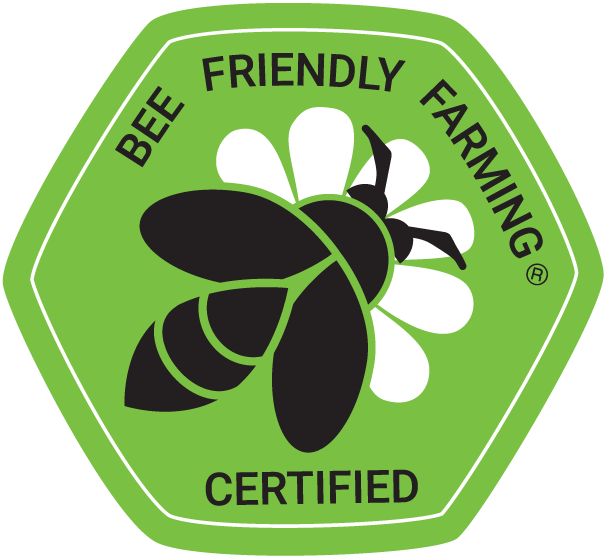Late Season Lifelines by Isabel Nazarian, Pollinator Partnership
As the final months of the growing season approach, many farmers turn their attention to harvesting and winter preparations. Most flowering species have finished their bloom cycle, but this does not signal the end of the season. From August through October, farms have a significant role to play in supporting pollinators. Late-season native plants, often blooming in field margins, hedgerows, and pastures, provide vital forage and habitat potential when floral resources are scarce. These sources of nectar and pollen provide critical nourishment for bees, butterflies, and other pollinators as they prepare to overwinter or embark on migratory journeys.
Large carpenter bees drying off on goldenrod
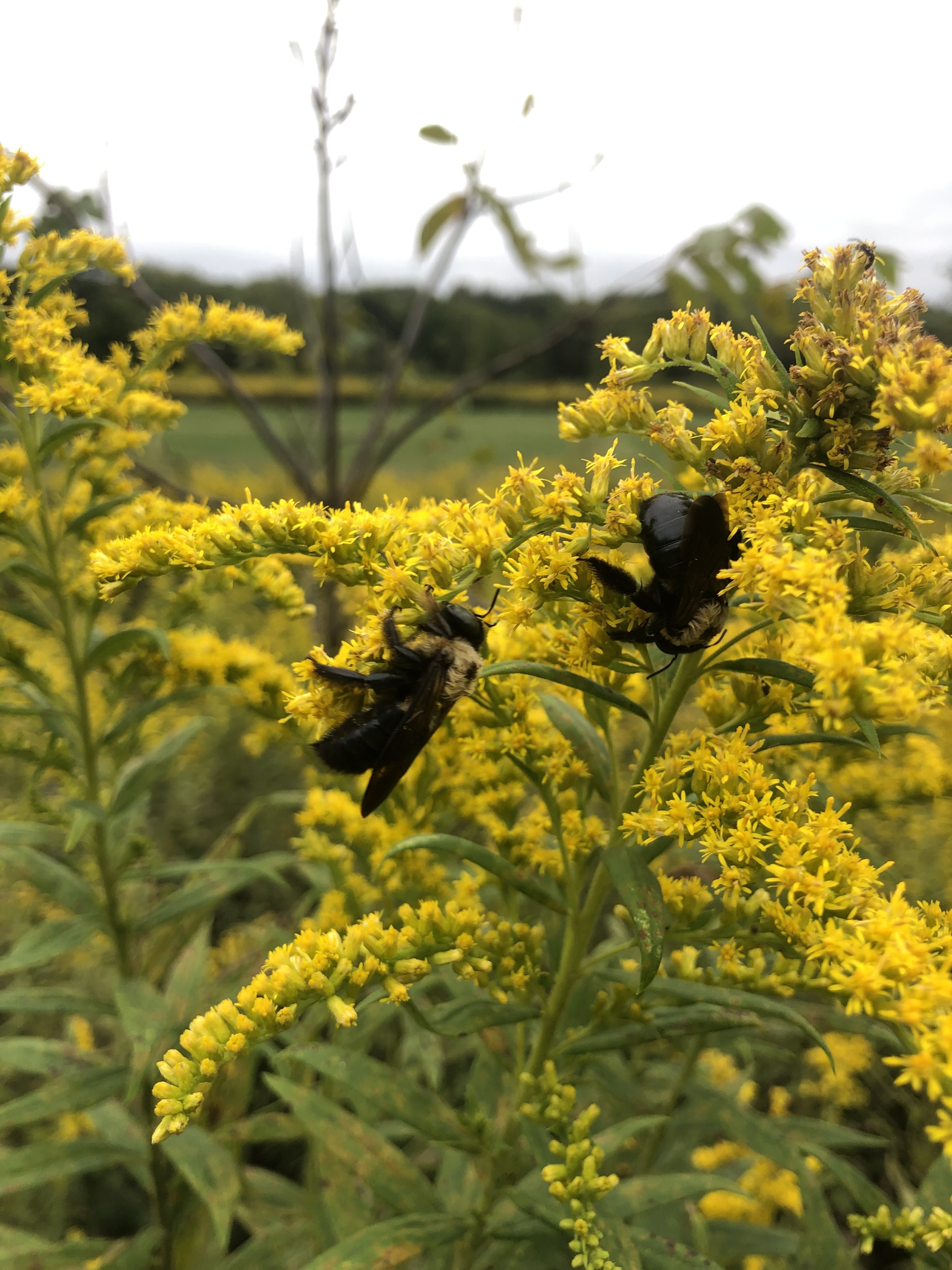
Why Late-Season Forage Matters
During the peak of summer, pollinators find an abundance of pollen and nectar through wildflowers and flowering crops. Yet, as the seasons change, sources for nectar and pollen diminish rapidly. In the Midwest and other regions where winter months bring an end to the growing season, species that bloom throughout August, September, and October give pollinators one final push to collect resources for the winter. Different pollinators will use these resources to further their lifecycle in diverse ways.
Fall farmland habitat in Ohio
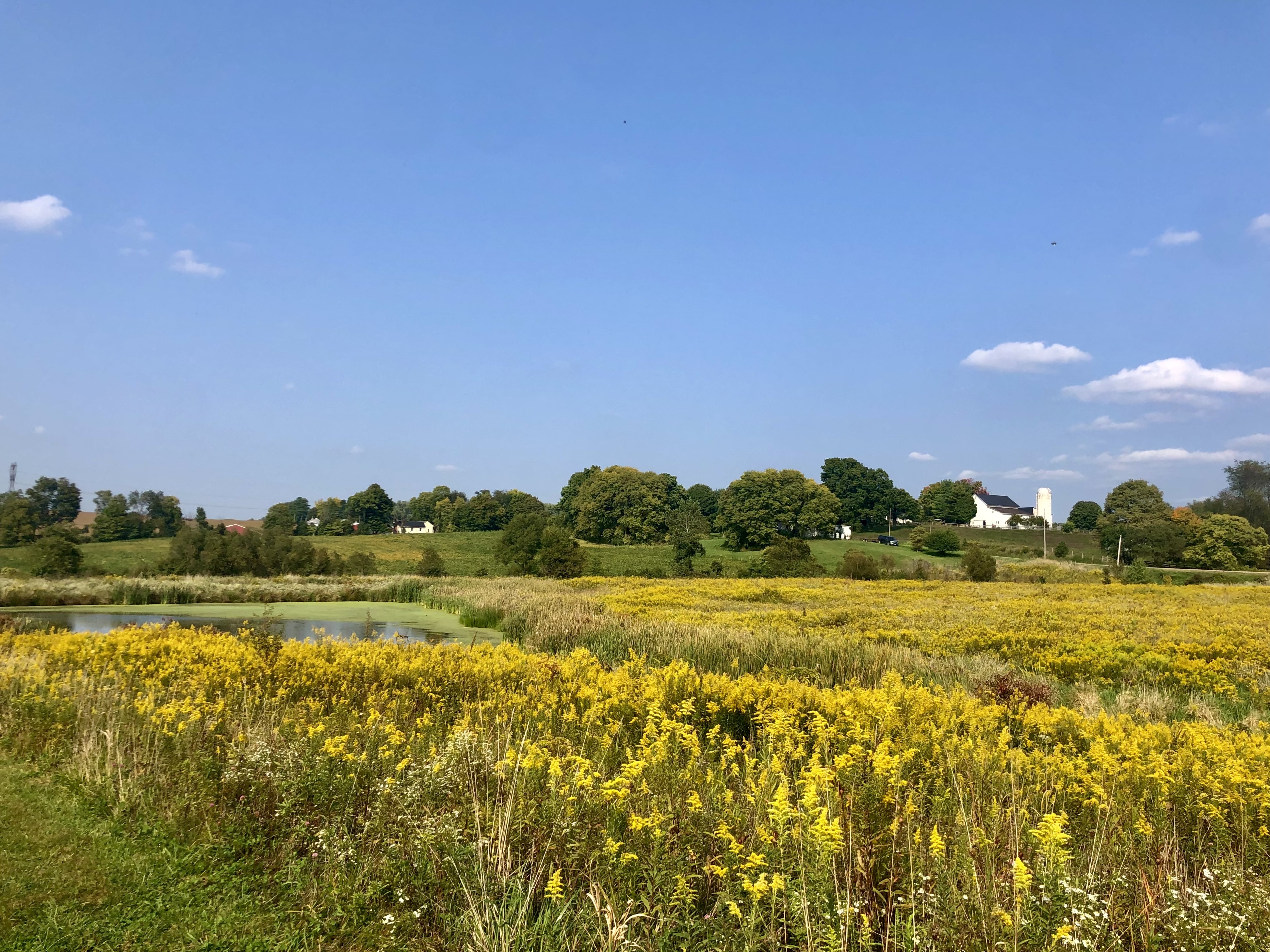
Managed and unmanaged honey bee colonies use this time to gather as much nectar and pollen as possible. Through the creation of honey, this nectar is preserved and stored in cells within their hive. Throughout the winter, as they cluster together to stay warm in the hive, they will portion out honey to keep their energy levels up. Pollen is saved as “bee bread” in cells and used as a protein source for larvae and workers. Access to fall blooms makes all the difference in a colony’s ability to survive the winter.
Monarchs and other migrating butterflies cannot stash nectar away for later, so they rely on goldenrod and other late blooming species to fuel up before taking long journeys south. For non-migratory species, many overwinter in a dormant state. This requires a reliable food source at the end of the season so they can make it through the winter with no additional supplementation.
Female native solitary bees construct their nest either underground or above ground in hollow stems or other nesting cavities. The female will then lay her eggs with a rich provisional mixture of nectar and pollen that will feed her offspring as they develop in the nest. The female solitary bee uses the last few months of the growing season to feed herself and secure resources to feed the next generation of solitary bees.
Late-Blooming Wildflowers
Goldenrods and asters may act as the workhorse of late season forage, but there are a variety of other wildflowers that will ensure the success, migration, and survival of pollinators in the Midwest and beyond. Many of these species have long been considered “agricultural weeds”, but their existence in planted habitat or as volunteers support pollinator populations.
Showy Goldenrod visited by a variety of bees, wasps, moths, and beetles by Amber Barnes
Goldenrods (Solidago spp.)
Ohio is home to more than 20 species of goldenrod, and it is often the most abundant family to flower in the early fall. Each species has a unique structure and function. One of the most ecologically important perennials in the region, it supports more than 100 species of butterfly and moth caterpillars, as well as many pollen specialist bees and a variety of wasps.
Smooth blue aster visited by a small carpenter bee by Amber Barnes
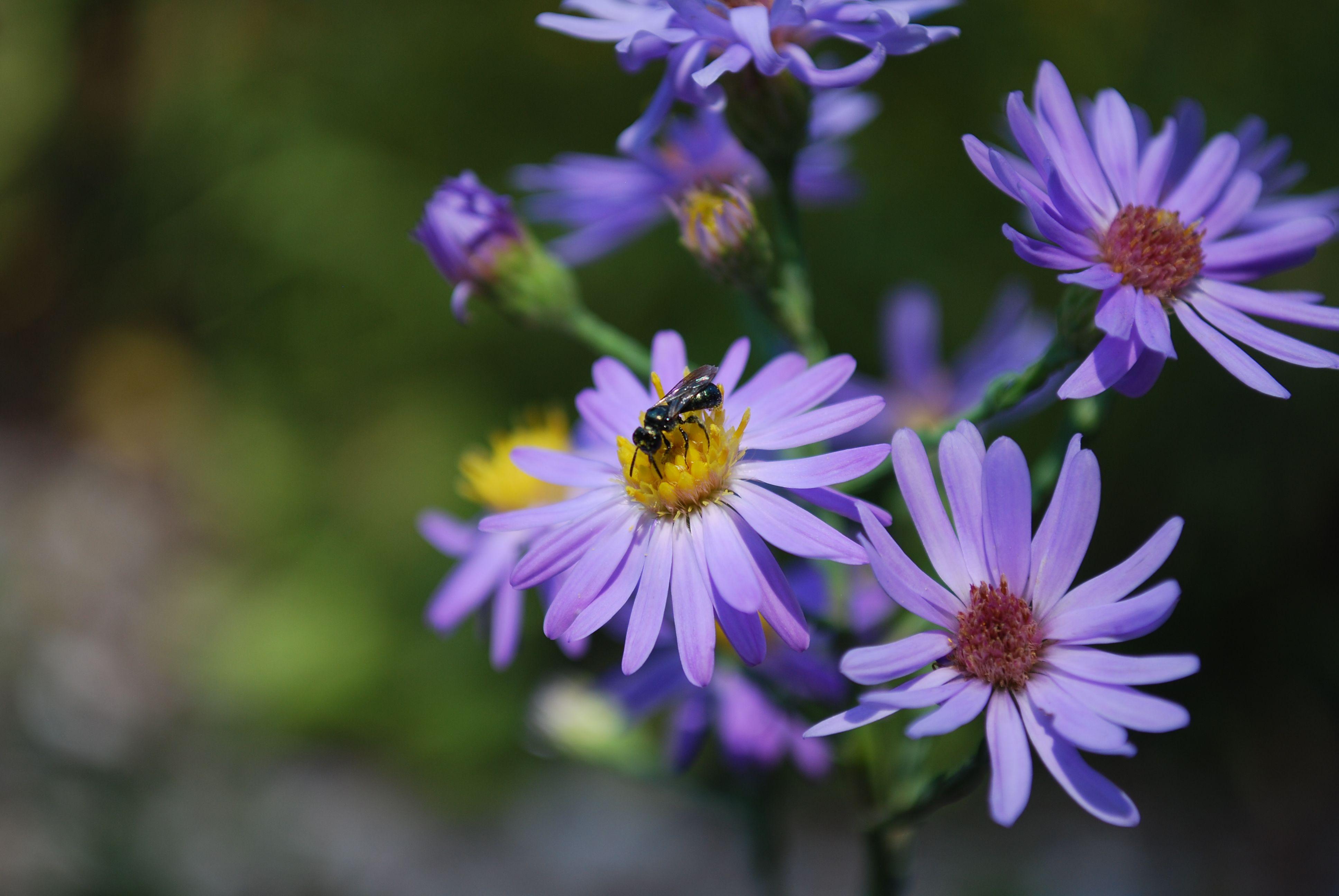
Asters (Symphyotrichum spp.)
In this case, asters encompass many species in the “American aster” genus. Some midwestern highlights in the early fall include smooth blue aster (Symphyotrichum laeve), New England aster (Symphyotrichum novae-angliae), and Calico aster (Symphyotrichum lateriflorum). Their wide diversity in size, structure, and color supports a variety of pollinator preferences and host needs.
Monarch butterfly on Ironweed by Birgit Nazarian
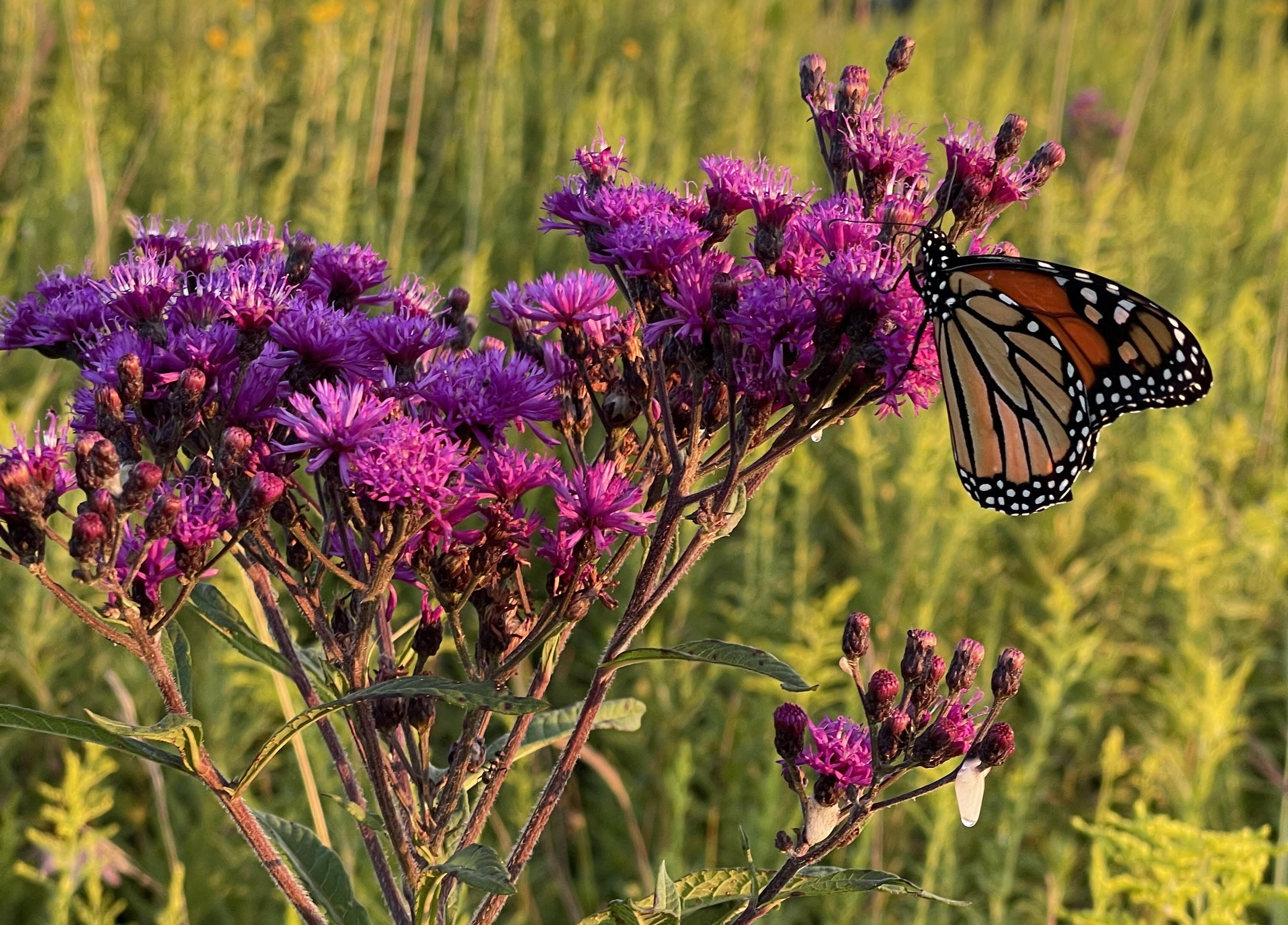
Ironweeds (Vernonia spp.)
Ironweed refers to a handful of species, such as giant ironweed (Vernonia gigantea) and prairie ironweed (Vernonia fasciculata). This tall, hearty perennial has vibrant purple blooms and is a host species to many butterflies and moths.
Eastern tiger swallowtail butterfly on Joe-pye weed by Amber Barnes
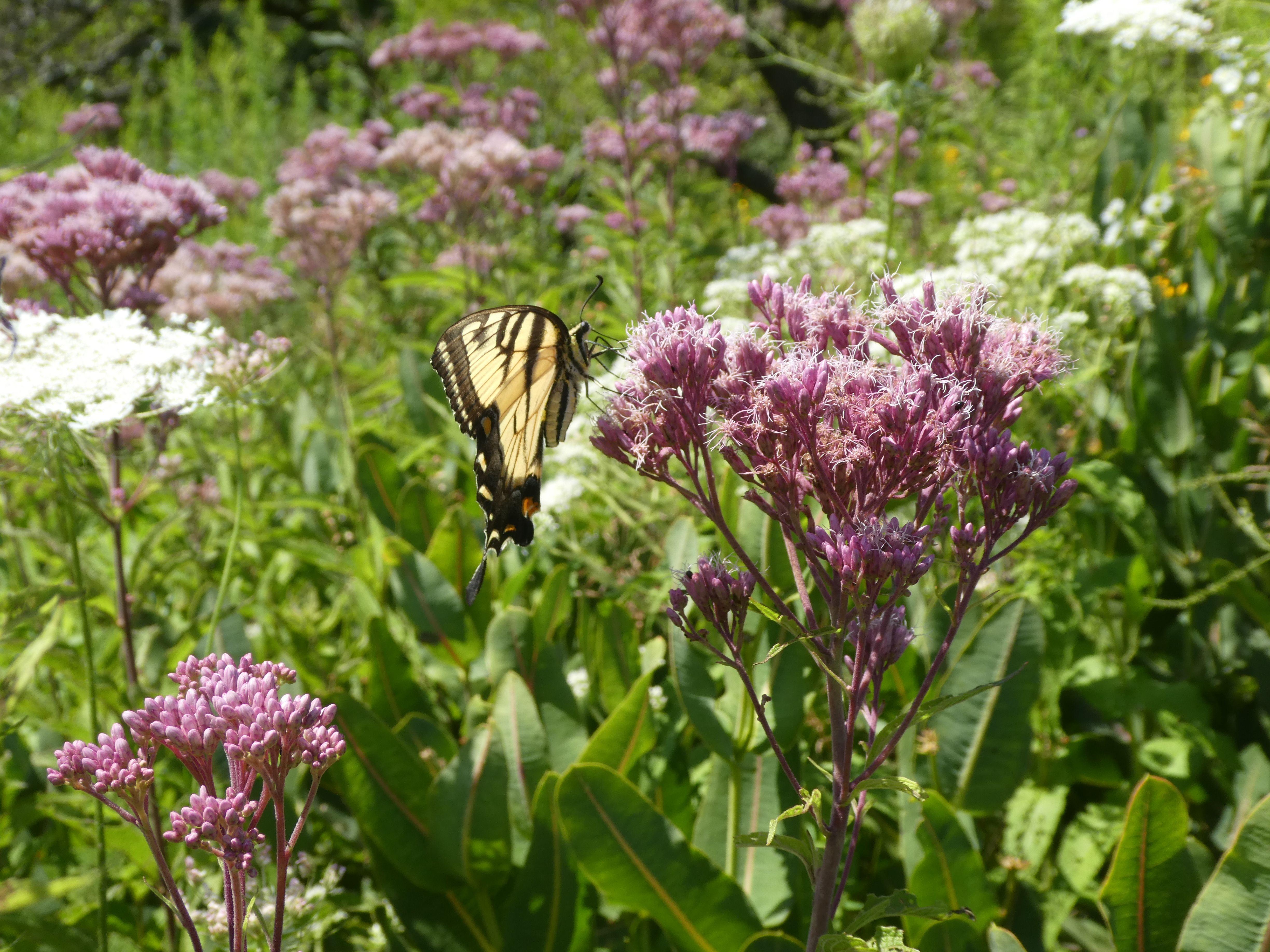
Joe-Pye Weed (Eutrochium spp.)
Joe-Pye Weed species, like Sweet Joe-Pye Weed (Eutrochium purpureum) or Spotted Joe-Pye Weed (Eutrochium maculatum), are tall, pink flowers that often bloom along field and woodland edges. They are a favorite nectar source for monarchs and other butterflies, as well as skippers, moths, bees, and act as a larval host for many moths.
Goldenrod soldier beetle visiting Jerusalem artichoke by Anne Overhulse
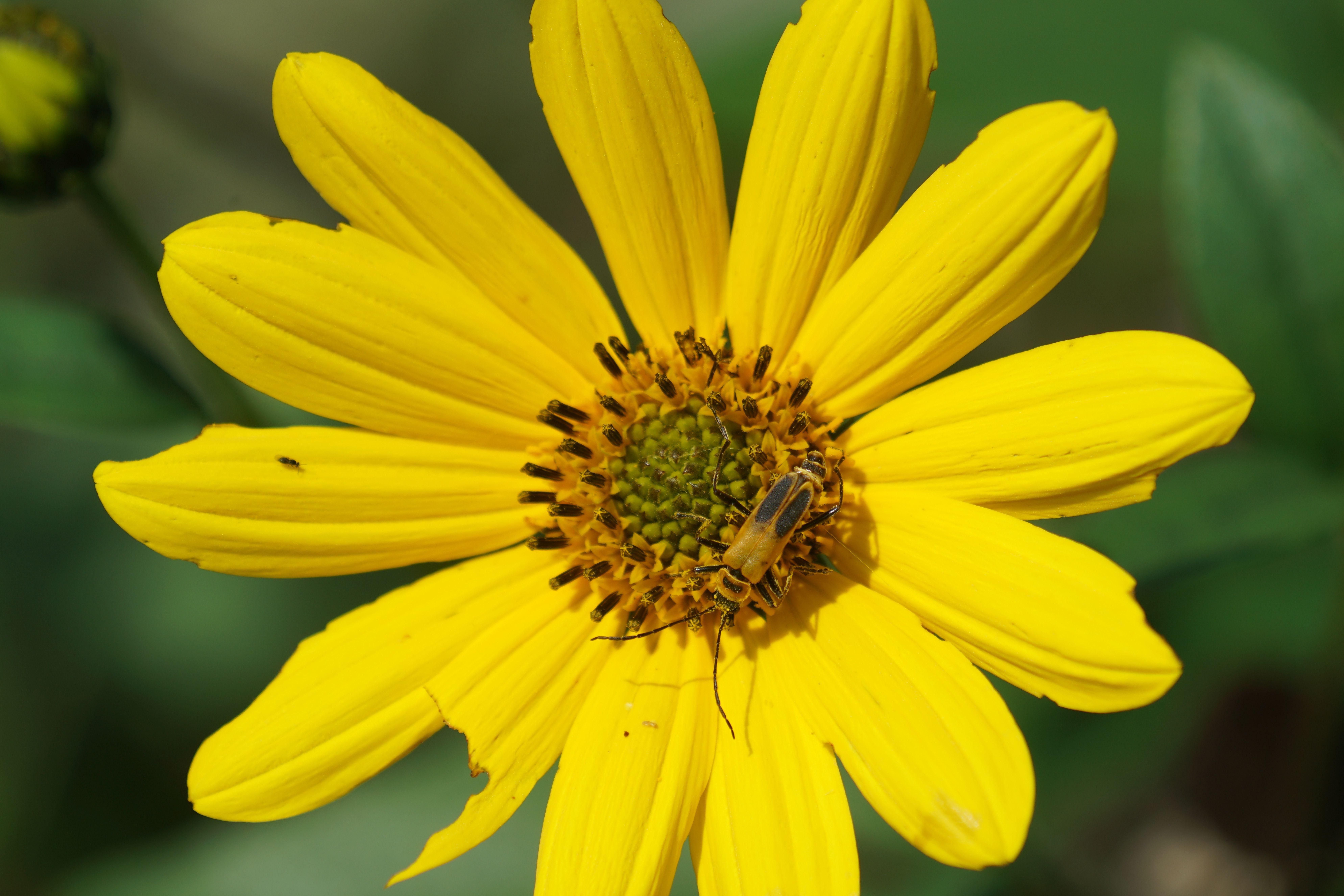
Sunflowers (Heliopsis and Helianthus spp.)
Native sunflowers, like Maximillian sunflower (Helianthus maximiliani) and false sunflower (Heliopsis helianthoides), establish well in a variety of site conditions and spread easily, providing a reliable food patch. Sunflowers feed many short and long-tongued bees, butterflies, skippers, and moths in addition to acting as a host species.
As the growing season winds down, now is the time to think of your farm as a late-season haven for food and nesting habitat. Whether it's leaving field margins uncut, planting late blooming cover crops, or maintaining habitat patches, every effort counts in carrying pollinators through the winter. Autumn is the perfect time to plan for pollinator habitat, plant native species, and tend to your landscape with native bees in mind.
By supporting pollinators through the fall, we increase their chance of winter survival and ensure they will emerge again in the spring to benefit crops alongside the larger ecosystem!
To request resources or learn more about how you can support pollinators on your farm, contact one of our partner biologists or fill out the appropriate inquiry below. Our partner biologists can answer your questions, provide information about Farm Bill programs, and help producers understand if they might qualify for technical or financial assistance for implementing and enhancing pollinator habitat on their agricultural lands.
To request information or learn more about pollinator conservation opportunities through Farm Bill programs, complete the appropriate form below:
Midwest Assistance Request Form
Northeast Assistance Request Form
Western Assistance Request Form
P2 Partner Biologist contact information and coverage areas:
Sarah Gardner (Western US)
Isabel Nazarian (Midwestern US)
Lacey Smith (Northeastern US)
Sophia Sorboro (Ohio)
Mary Welz (Indiana)
To learn more about Pollinator Partnership’s Bee Friendly Farming Certification Program:
Visit Bee Friendly Farming
Or email bff@pollinator.org.
